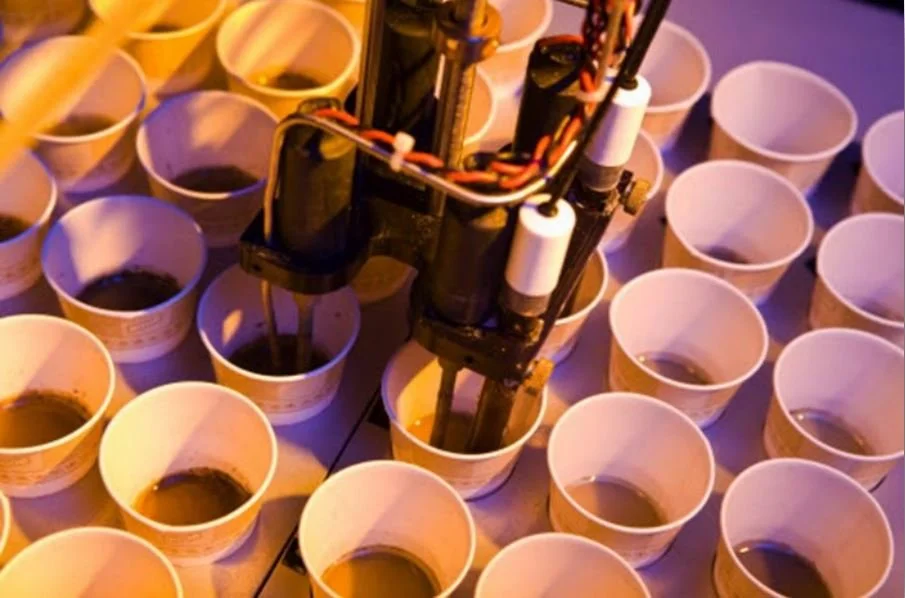Fall is a good time to take soil samples. Fields that need soil pH adjustment (usually need some ag lime to raise pH) are identified. Soils are usually dry and easier to get over with spreaders that are heavy with lime.
Read MoreFall, especially when dry, is the best time to break up these soils so that compaction does not persist into the next season.
Read MoreFall harvest has begun, and this is a good time to look ahead and plan for better soil health. Soil health has several important aspects, but first and foremost is soil erosion prevention. Soil loss equals topsoil loss, and topsoil is where the largest portion of soil and plant biology occurs.
Read MoreCorn planting is underway in western Kentucky, and the number of acres should increase rapidly this week. In most years, the weather, forecast, and soil conditions are more important than the calendar for planting corn.
Read MoreSoil acidity is neutralized by the consumption of protons, not the addition of calcium. The results of this study support the chemistry in Equations 1 and 2. Liming acid soils should be based on products that contain carbonates, oxides or hydroxides, the associated RNV, and using an application rate based on soil pH and buffer pH - NOT the amount or form of calcium present in a product.
Read MoreThis dry fall weather may be great for harvesting, but it’s not ideal for establishing cover crops. Just like any other crop, cover crop seed needs moisture to establish and that is certainly in short supply this fall.
Read MoreThe chemical health of the soil supporting your crop is strongly related to soil pH and fall is the best time to correct excess soil acidity. Soils are usually dry and application traffic compaction is less likely.
Read MoreSOIL TESTING for the next crop is important this fall. The summer season’s drought, after spring wetness (with compaction issues), is causing lower, more variable, corn and soybean yields.
Read MoreMy objective here is to help the reader understand what I look at, and why, when I get a soil test report to review. There is always a personal bias in things like this, but it is important for grain producers to understand why a soils extension specialist asks the questions they ask when reviewing one of these documents.
Read MoreFertilizer applications can influence the overall yield and profit of crop production systems. Phosphorus (P), potassium (K), and lime additions for winter wheat production should be based on a good soil sampling and testing protocol. A soil test is recommended every two years or less, depending on the crop rotation and individual field knowledge.
Read MoreMost winter wheat grown in Kentucky follows corn – sometimes soybean. The residual nitrogen (N) fertilizer remaining and/or that N released from crop residue is typically sufficient to meet wheat’s fall N requirement, prior to dormancy. But how does one know if sufficient N is present to meet the wheat N requirement?
Read MoreWe’ve conducted an experiment over the last two years to compare how wheat and cereal rye perform as cover crops—research funded by the Kentucky Soybean Promotion Board.
Read MoreRow crop producers recently got a first look at the results of a groundbreaking University of Kentucky research project that should increase production on their farms and their bottom lines.
Read MoreSeveral University of Kentucky soil scientists, an economist, a forage specialist, and other experts gathered in Princeton on October 3 to share findings from research that looked at getting rid of an issue for many western Kentucky farmers, the fragipan.
Read MoreSpring application of poultry litter is ideal for maximizing the economic value of poultry litter but faces challenges that include wet soil conditions, lack of time to spread litter near planting, and availability of poultry litter in the spring. Therefore, it is a common practice in Kentucky to apply poultry litter in the fall.
Read MoreLike all agricultural practices there can be drawbacks if a cover crop is not managed properly. As we quickly approach the time to plant cover crops let’s look at how to gain the benefits of cover crops and avoiding the situation of a cover crop becoming a pest or introducing a pest.
Read MoreFor those that were not able to join us for the poultry litter forum "Managing Poultry Litter Lessons From The Delmarva and Ohio Valley", it can be viewed at the link below. This was part of the AgExpo in Owensboro on January 25th, 2017 and was sponsored by the Kentucky Soybean Board and Kentucky Corn Growers Association.
Read More















